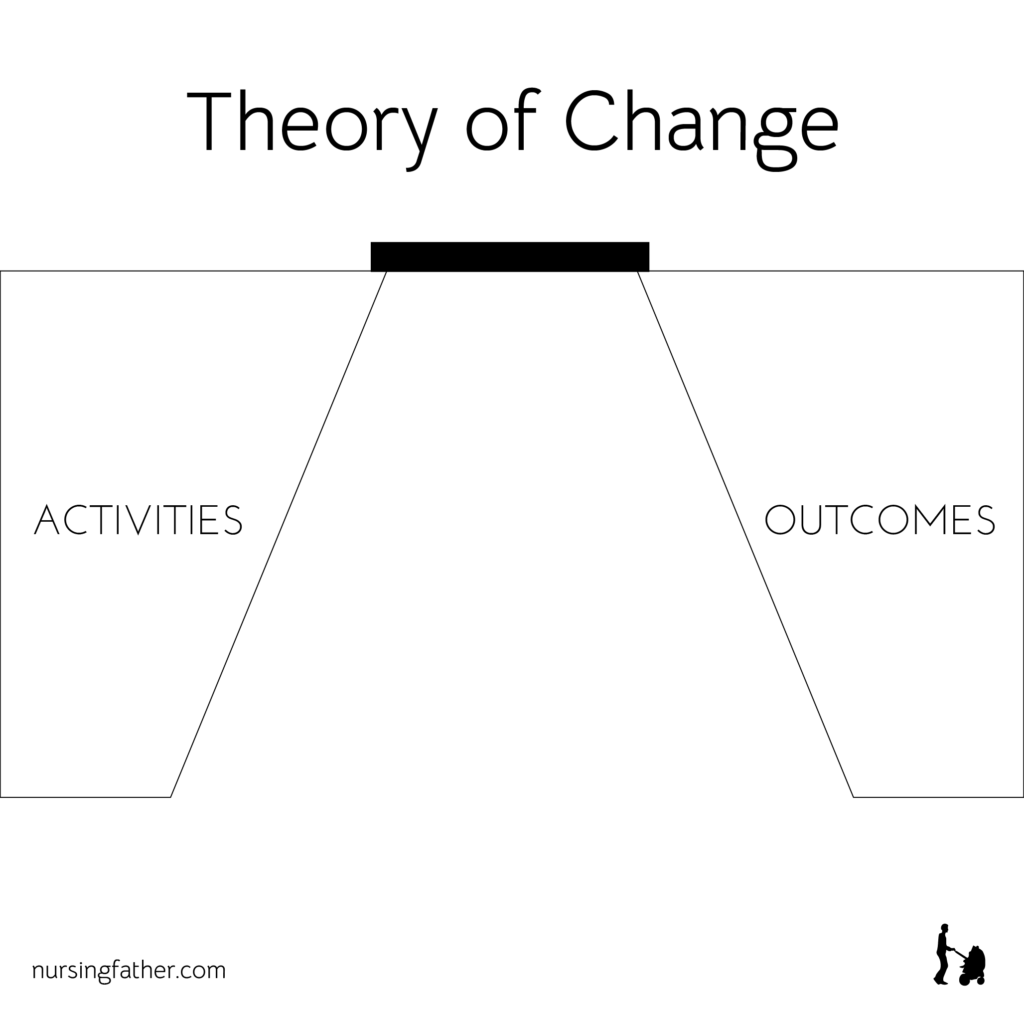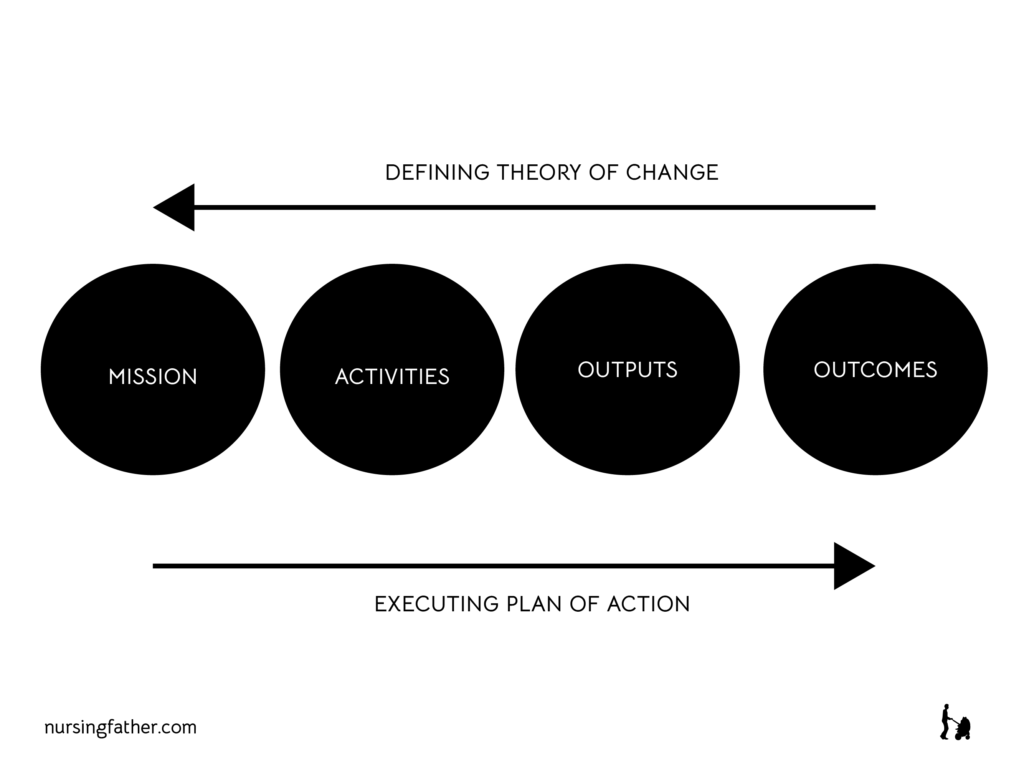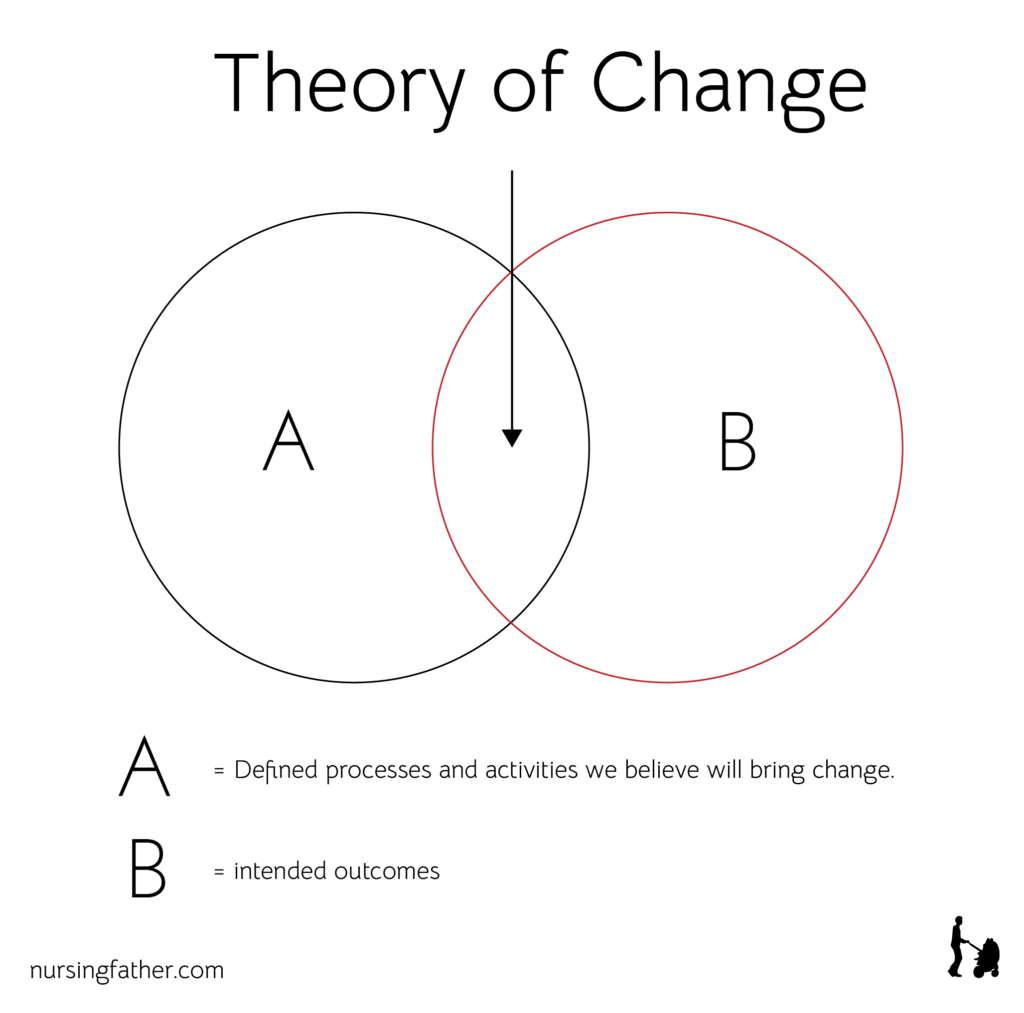
What is Theory of Change?
Theory of Change (TOC) helps organizations define what results they are keen to achieve, why those results matter to them and what activities they hope to put in place to measure that outcome. Theory of Change is a tool for social change and helps organizations take a more strategic approach towards accomplishing impact by walking backwards from the desired outcomes.
A theory of change is a purposeful model of how an initiative—such as a policy, a strategy, a program, or a project—contributes through a chain of early and intermediate outcomes to the intended result. Theories of change help navigate the complexity of social change.
Olivier Serrat, Knowledge Solutions
Organizations have reasons they start. A founder encounters a problem, chooses that problem and decides that the problem must be solved. The founder kickstarts an organization and outlines what approach the organization will take to solve that problem. Then activities kick off. However, after a while, the organization discovers the complexity of the problem and how it demands different sets of approaches to solve. Other organizations are started simply because the founder found certain activities enjoyable or important.
However, they are not strategically connected with the results causing the organization to engage in tons of activities but show minimal long lasting impact. Another common approach is organizations measuring their impact by the number of people they have reached, rather than the amount of people whose outcomes have improved due to those encounters. This often stems from improperly defining one’s outcomes, thus one’s theory of change.
Organizational Theory of Change vs Project level Theory of Change
Starting an organization with outcomes in mind appears the best approach and this is why Theory of Change is an important tool. Theories of Change may be defined at organizational level and subsequently at project levels. For organizational theories of change, they are more long term, strategic, broad and cover a wider range of activities. Project level theories of change are more specific, medium term, and often simpler. They often also contain a smaller range of activities which are specific to that project
Whether you are defining a theory of change for organizational purposes or project purposes, the approaches are very similar. In both, you are seeking to understand what your outcomes, outputs, activities and mission are. While your plan of action starts from your mission, defining your theory of change starts from the setting outcomes you will like to achieve

1. Outcomes
This is what has changed because of the work you have done. It answers the question, what is different (or has improved) because of your action?
2. Outputs
This is the amount of work you have done and what that work has produced.
3. Activities
This is the work you are doing.
4. Mission
This is the work you have chosen to do to accomplish your goals.
Steps for Creating a Theory of Change.
However, creating a theory of change is simple not working this backwards. Figuring out your theory of change works differently. Your theory of change should precede designing your programs, however defining your problem statement should come first. Problem statements often include the context of the problem, the victims of the problem, the cost of the problem and so on. Problems when not clearly defined result in lines of action that completely miss the road in achieving the organization’s goals.

This is the most probable step
- Define the problem (Problem Statement)
- Define your desired outcome (Impact Goals)
- Define everything you know about the situation, deciding what you can control and what you cannot control. (Research)
- Define how you hope to reach this outcome while solving the problem. (Mission Statement)
- Define what you believe must be true for your plan to work. (Assumptions)
- What steps you want to take to accomplish the goal. (Approach)
Where the beneficiaries are human, here is an example of how you might define a theory of change
We will undertake the following activities (activities), because we believe so and so (assumptions) about this problem to be true. Through our activities, we will reach these beneficiaries (output), whose lives we will change in this way (outcome).
At Nursingfather, we provide design services to organizations seeking positive social impact, because we believe with better approaches to the design of their programs, processes and key products, they can raise the efficiency and effectiveness of their activities in delivering outcomes up to 10 times their current status.

Benefits of Theory of Change
The benefit of theory of change is that it helps you define how your organization defines success and if it is in favour of the beneficiary or your activities. Leaders who are mindful of their theory of change can also properly evaluate their progress periodically, measuring their actual outcomes against their desired outcomes and subsequently making adjustments. While the theory of change should be fundamental to everything the organization does in their chosen impact field, theories of change should understand changes overtime especially as the organization discovers and learns more about the field in which they are operating and the approaches it demands to enable the organization reach the desired outcomes.
THE END
Cover Photo by RF._.studio from Pexels
A Simple Introduction to Theory of Change

